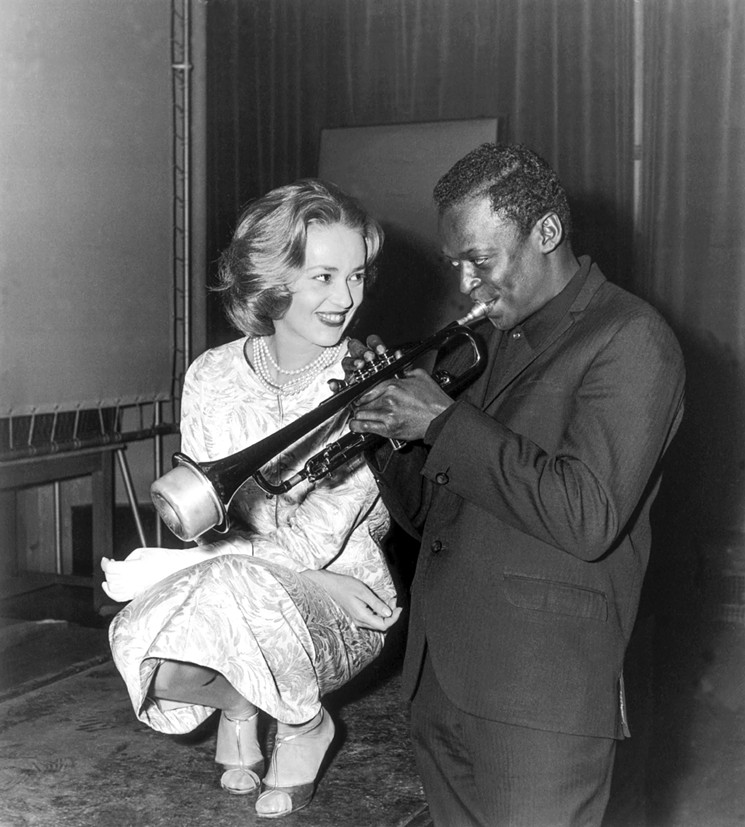Miles Davis had never scored a film until a serendipitous encounter with French director Louis Malle, whom he met through Boris Vian, the novelist, poet, and musician, who was the artistic director of Philips Records. In the winter of 1957, Davis’s band happened to be playing gigs in Paris at the time of Malle’s production of Elevator to the Gallows (playing August 3–11 at Film Forum); on their one night off, they recorded the entire score, starting at ten or eleven and finishing at five in the morning. The filmmaker had chosen a handful of scenes to feature music, which he played on a loop for the musicians as they improvised the tracks.
There’s a fascinating video of Davis solemnly watching actress Jeanne Moreau on screen as he smoothly conjures the aural atmosphere surrounding her; Richard Metzger has described it as like “watching Picasso paint.” Davis’s on-record experimentation with “modal jazz” begins here, on that night and in this score. He would further develop the sound on the groundbreaking LPsMilestones (1958) and Kind of Blue (1959).
Like Davis, Malle was looking to create something new. After assisting Robert Bresson on A Man Escaped and co-directing Jacques-Yves Cousteau’s The Silent World, Malle was impatient to direct his own film. But the timing was off; just a few years shy of the French New Wave — an explosion of creativity that brought attention and money to France’s new cineaste generation — Malle’s attempts to obtain financing for an autobiographical project failed. He was too young and inexperienced, an unsure bet.
So Malle played it safe: He made a noir. At the time, it was typical for first-time French directors to shoot a pulpy detective story (called a “polar”). Malle adapted the story of Noël Calef’s Ascenseur Pour L’Échafaud with the assistance of French writer Roger Nimier. The first-time director kept the production low-budget with the help of producer Jean Thuillier, who taught Malle how to exploit new financing rules in French film production, techniques that would later fund the innovations of the New Wave crowd. This would allow for a sizable return that would permit Malle to quickly start his next film. The artistic compromise to make a genre film worked out for the young director: By infusing his personal, art-cinema sensibilities into noir, he transcended genre.Elevator to the Gallows paved the path for an illustrious career and provided a precursor to the French New Wave, all as it introduced the world to modal jazz.
Elevator to the Gallows revolves around Florence (Moreau) and her lover Julien (Maurice Ronet), who have plotted to murder her husband, M. Carala (Jean Wall). After framing Carala’s death to look like a suicide, Julien gets stuck in his office building’s elevator, and his car is stolen by a teenage couple, Louis (Georges Poujouly) and Véronique (Yori Bertin), looking for a joyride. Florence spends the night looking for Julien, while he tries to find a way out of the suffocating elevator, and that teen couple get into their own trouble at a motel with German tourists. For all that, the film’s signature sound, Davis’s melancholic trumpet, belongs to Florence, haunting her as she ambles through the newly modernized Parisian streets, which look bleak despite all the glossy lights and shiny chrome finishes on the cars. Occasionally the city background is softened out as the camera focuses on the disoriented Moreau, with close-ups of her distraught face accompanied by Davis’s terse wails, all painting a baneful portrait of a city too often romanticized onscreen as roaring with hip nightlife.
Elsewhere, the jazz stays quiet. Indeed, only 18 minutes of the 92-minute film feature Davis’s music. There are long unscored interludes of eerie calm, like scenes of Julien navigating every square inch of the elevator for a possible escape route and Florence getting caught in the rain and drifting through empty nightclubs. Davis employs a more upbeat tempo for Louis and Véronique’s subplot — a frivolous, glib quality in these tracks matches Louis’s cavalier attitude and Véronique’s romantic, naïve illusion that they’re on an adventure. As their encounter with the German tourists begins to sour, the jazz returns, but here the fast tempo takes on other qualities: Instead of complementing the mise-en-scène, the music becomes louder, overshadowing the flow of dialogue. Davis’s trumpet and Barney Wilen’s saxophone dance a manic tango and magnify the simmering tension between Louis and the tourists, who become wise to the teens’ fabrications.
Malle’s choice of music followed Roger Vadim’s And God Created Woman (1956), which featured Brigitte Bardot dancing to Paul Misraki’s lively jazz salsa. But it’s Davis’s score that set a precedent for the French New Wave; many of its films, including Jean-Luc Godard’s Breathless and François Truffaut’s Shoot the Piano Player, would feature musical genres that matched the spontaneity of the filmmaking. Elevator to the Gallows remains distinctive from all these: It was a transcendent congruence between two art forms navigating experimental, audacious territory. Elevator to the Gallows married a new kind of jazz to a new kind of cinema, and created something altogether sublime.

